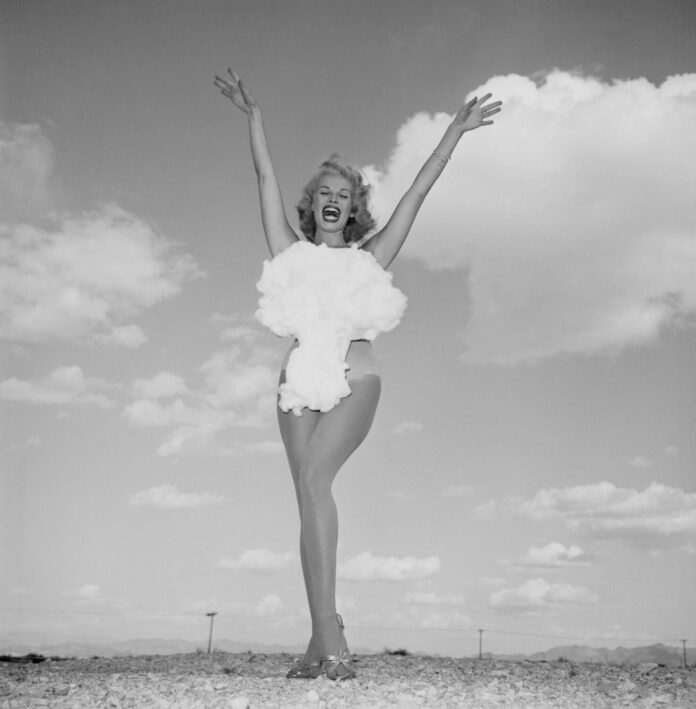Unraveling the Mystery of “Miss Atomic Bomb”: A Las Vegas Journey
The Search Begins
In the vibrant tapestry of Las Vegas history, few figures are as enigmatic as "Miss Atomic Bomb." This persona captured the imagination of many during the atomic age, serving as a peculiar yet captivating symbol of the period. Robert Friedrichs, an 81-year-old historian and retired scientist, initiated a quest that would span over two decades to uncover the true identity of the woman behind this iconic stage name.
Friedrichs first stumbled upon the name while perusing an archival newspaper photo featuring a showgirl alongside other Las Vegas performers. With limited information—just a stage name—he embarked on what would become an intense and absorbing investigation.
The Atomic Age: A Dual Facade of Fear and Fascination
The atomic era was marked by a paradoxical blend of dread and allure. From 1951 to 1992, the United States conducted hundreds of nuclear tests, predominantly underground, in the Nevada desert. However, the spectacle of above-ground explosions, with their dramatic mushroom clouds, intrigued the American public, rendering nuclear power both terrifying and breathtaking.
Seeking to harness the excitement surrounding this new frontier, Las Vegas dove headfirst into a concept that some dubbed nuclear tourism. In 1957, a promotional photo shoot captured the lead dancer of the Sands Hotel, adorned in a swimsuit styled like a mushroom cloud, smiling amidst the wide-open desert. This striking image would significantly shape Las Vegas’s identity as a land of fantasy.
The Quest for Identity
Friedrichs’s pursuit began around 2000, spurred by the upcoming opening of the Atomic Museum in Las Vegas. As a founding member, he hoped that uncovering the identity of Miss Atomic Bomb would mesh effortlessly with the museum’s mission. What initially seemed like a straightforward inquiry blossomed into an obsession that would consume much of his life.
He meticulously compiled leads and clues in countless binders. From following up on tips that took him across the country to combing through digitized newspaper archives and special collections, he poured hours into his search. His journey included interviewing the original photographer of the fateful shoot and conversing with former showgirls, yet the true identity of the captivating woman remained just out of reach.
A Breakthrough Moment
Friedrichs’s unyielding pursuit bore fruit when, after giving a talk at the Atomic Museum, an audience member reached out with an obituary detailing a woman named Anna Lee Mahoney. The obituary revealed that she had been the lead dancer at the Sands Hotel—a tantalizing clue that could finally piece together the puzzle.
Born on August 14, 1927, in the Bronx, Mahoney trained in ballet and performed under her stage name, Lee A. Merlin. By 1957, she was a regular in the Copa showroom, where she dazzled a host of renowned figures, including members of the Rat Pack.
Beyond the Spotlight
After retiring from dance, Mahoney dedicated three decades to a career as a mental health counselor, later moving to Hawaii to marry. She passed away in 2001 in Santa Cruz, California. Her photograph, however, transcended her lifetime, becoming one of the most frequently requested images in the Las Vegas Convention Center archive. The legacy of “Miss Atomic Bomb” includes influence on popular culture, from Halloween costumes to appearances in television dramas.
Building Connections
Friedrichs’s journey became increasingly personal as he forged valuable relationships along the way. His friendship with the original photographer, Don English, was particularly meaningful. Before the Atomic Museum opened to the public, Friedrichs had the opportunity to give English a personal tour, during which they captured a humorous photo together, showcasing the camaraderie developed between them.
Even after English’s passing in 2006, Friedrichs maintained ties with the vintage Vegas community. Conversations with former showgirls revealed a rich tapestry of stories about life in the spotlight and the societal dynamics of the era—providing glimpses into the lives of icons often reduced to mere footnotes in history.
The Significance of the Search
Friedrichs’s relentless quest not only illuminated the life of Anna Lee Mahoney, but it also fulfilled a critical gap in historical records. He articulated his motivation by likening it to recalling the name of the first President of the United States; such details matter in understanding the intricate stories that comprise American history. Through rigorous investigative work, supplemented by the assistance of diligent private investigators, he was able to unify the various names associated with Mahoney into a cohesive narrative.
Over the years, Friedrichs’s exploration transformed from a mere curiosity into a monumental endeavor, embracing the historical implications of his findings. His commitment underscored the importance of recognizing individuals who once thrived in the limelight, providing depth and context to the stories embedded in the fabric of Las Vegas.
Thus, what began as a search for a single name evolved into an exploration that cast light on the shadows of history, enriching both the narrative of Las Vegas and the legacy of its striking showgirls.
